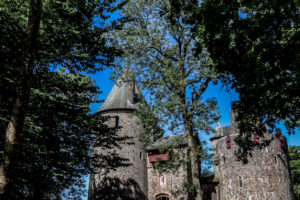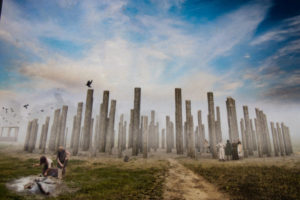Mountfitchet Castle is a Norman ringwork and bailey fortification in Stansted Mountfitchet, Essex, England. The site is currently in use as a Living history museum, complete with livestock that would have been kept by people during the period that the castle was in use.
The castle was built following the Norman conquest of England by the Mountfitchet family. It was constructed on high ground with a ringwork defense, enclosing around 0.5 acres, and a bailey complex, enclosing 1 acre on slightly lower ground. Within the ringwork was a keep, within a small, round enclosure.
It is believed to have been an early Iron Age fort and Roman, Saxon, and Viking settlement. Artifacts found on the site from these periods support this belief. In 1066 the site was attacked by the Normans and Robert Gernon built his castle here, making it his chief seat and the head of his Barony. Robert Gernon (or Robert Greno as he is referred to in the Domesday Book) came over from France with William the Conqueror and was rewarded with this Lordship and several others in the County. The male line of the Gernon family continued for only five generations.









